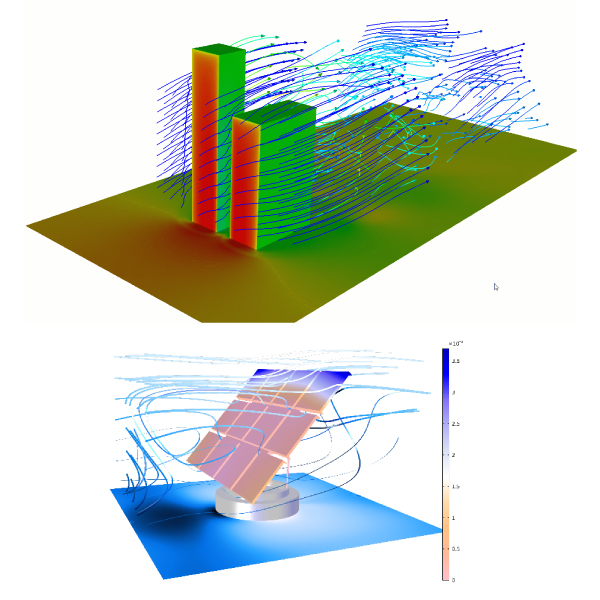
Fluid-Structure Interaction.
The interactions between incompressible fluid flows and immersed structures are nonlinear multi-physics phenomena that have applications to a wide range of engineering disciplines. ITEXES has extensive experience modelling fluids and their interaction with structures faced by an interdisciplinary effort for advancing the study in fluid-structure interactions.
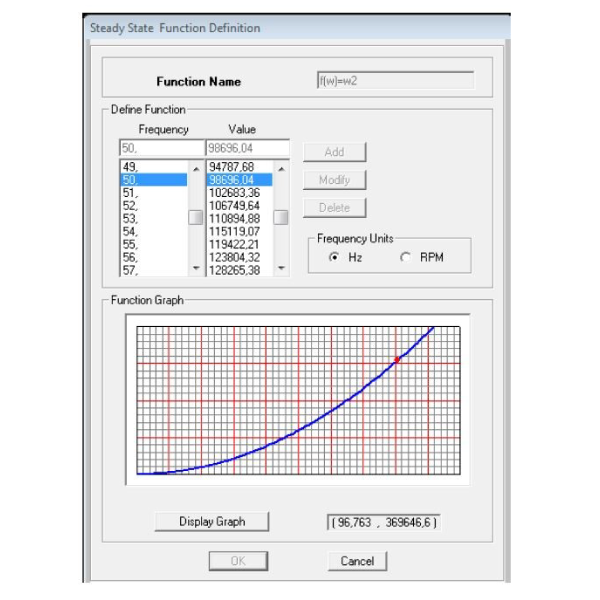
Design of structures and foundations for vibrating/dynamic equipment.
Pumps, turbines and compressors are conspicuous vibration generators. As a consequence, ITEXES has participated in various projects oriented to establishing the origin of such excessive vibrations and, once identified, to proposing mitigation measures.
Our activities in this field span a notable range.
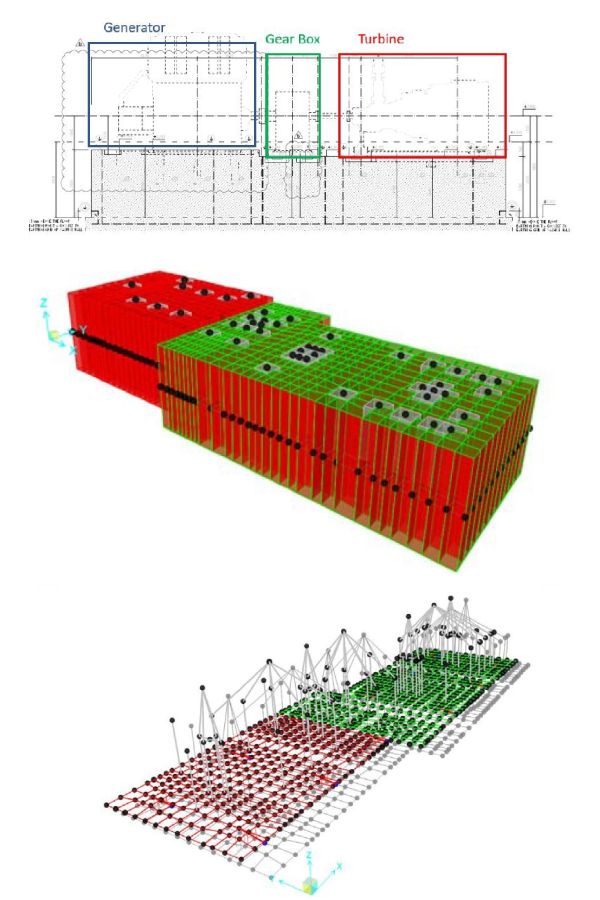
Dynamic interaction with the ground.
ITEXES has carried out several projects dealing with wind turbines, spanning the whole world. Especially significant were the dynamic studies, under both wind-generated and seismic loads.
The objective of the studies varies with the project, but usually includes the foundation design, particularly when the ground may undergo problems such as seismic liquefaction. We have also investigated failures of towers and foundations, and we have contributed to the remediation of the problems detected.
Perhaps our more noteworthy projects are those that involve innovative structural designs, onshore and offshore.

Tall and slender structures.
Slender steel structures are vulnerable elements subjected to second order effects and large displacements. ITEXES performs natural frequencies and bukling analysis for such structures to obtain the safe and cost affordable structures. Construction stges analysis are performed to ensure the safe installation of such complex structures.
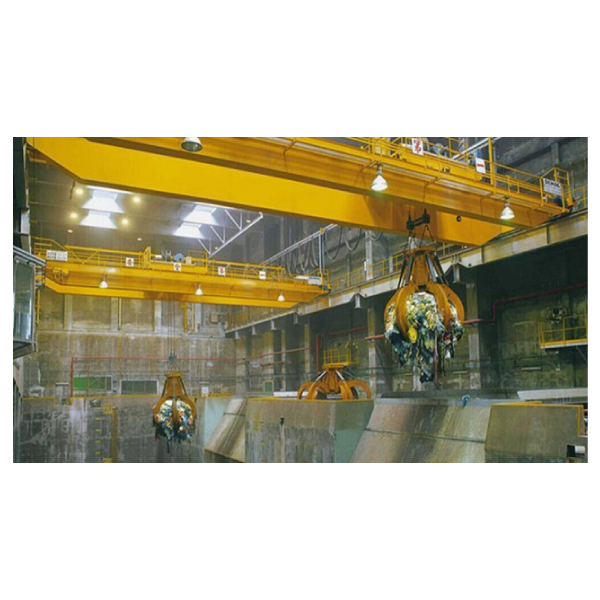
Crane runway beam design.
ITEXES has gained extensive experience over the years on the crane supporting system design, especially for Turbine and Electrical Building. We provide advanced analyses focused on the underhung hoist and crane girders taking into account second order effect and dynamic loads.
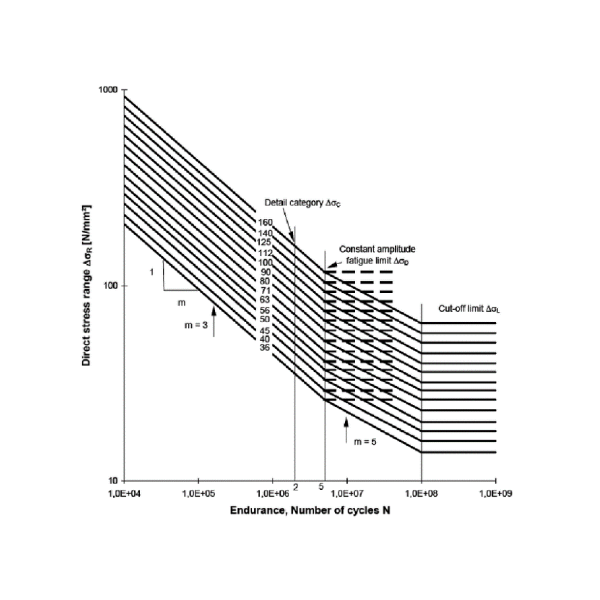
Fatigue Analysis.
The phenomenon of fatigue in materials is due to the application of stresses that vary over time. Its danger is due to the fact that these stresses are below the strength of the material. In fact, if applied individually, one of these stresses would not produce any damage. Failures due to fatigue account for 90% of the cases of failures in operation. ITEXES has a particular focus on these structures subjected to fatigue which usually are key elements for the production of a manufactory plant.
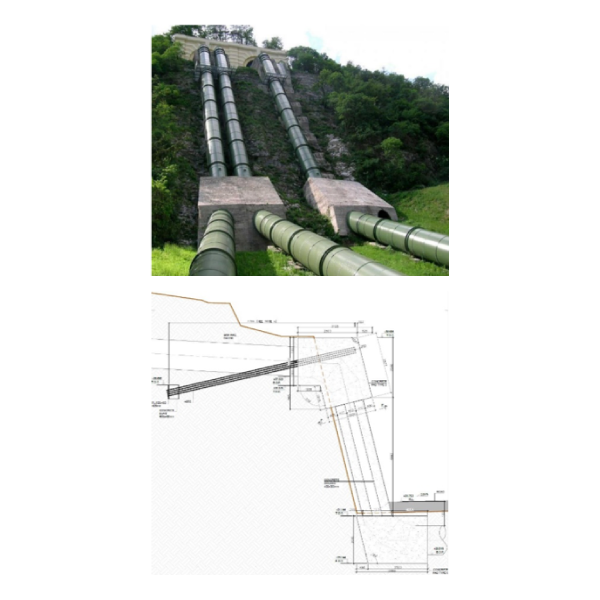
Anchors for pipelines.
The anchor blocks serve the purpose of counteracting all the stresses that the fluid transmits on the internal walls of the conduits within which it is conveyed, absorbing them in order to then discharge them onto the foundation soils. Generally, these actions are hydraulic and depend both on the pressure inside the pipeline and on water hammer phenomena and on any changes in direction of the pipeline axis at the anchor block.
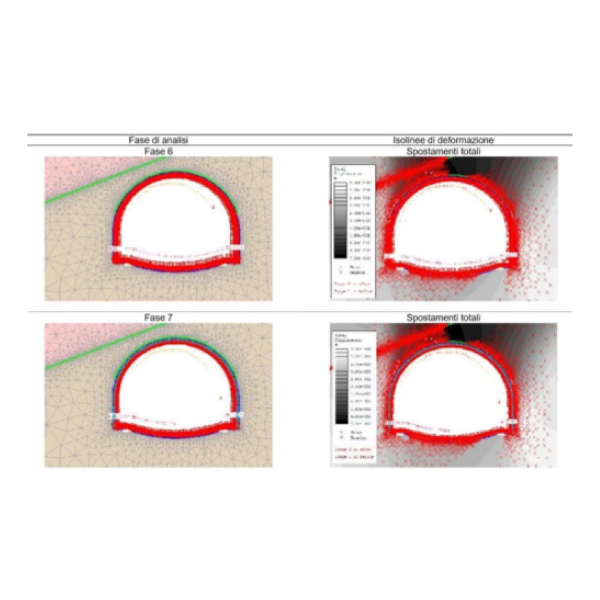
Soil-Structure interaction by Back Analysis.
The application of the back analysis represents a qualitative advance made in determination of the stress-strain state of soil. In our project it is of a great benefit because of the results and data that verify not only the methods and the models but also the applied technical solution.
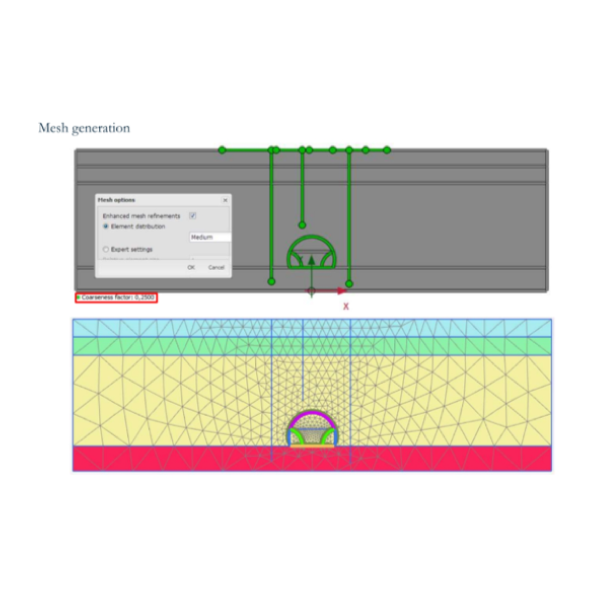
Underground Construction in Urban Areas.
Building below cities is a high-risk activity, and so there is a major emphasis on the reliability and the strength of the structures, and on the limitation of local disruption. ITEXES has unique, specialist expertise relating to all aspects of underground structures, from the reliability of pile structures to the impact of construction work on the locality. We also provide solutions about how to reduce local disruption and how to manage stakeholder expectations better.


